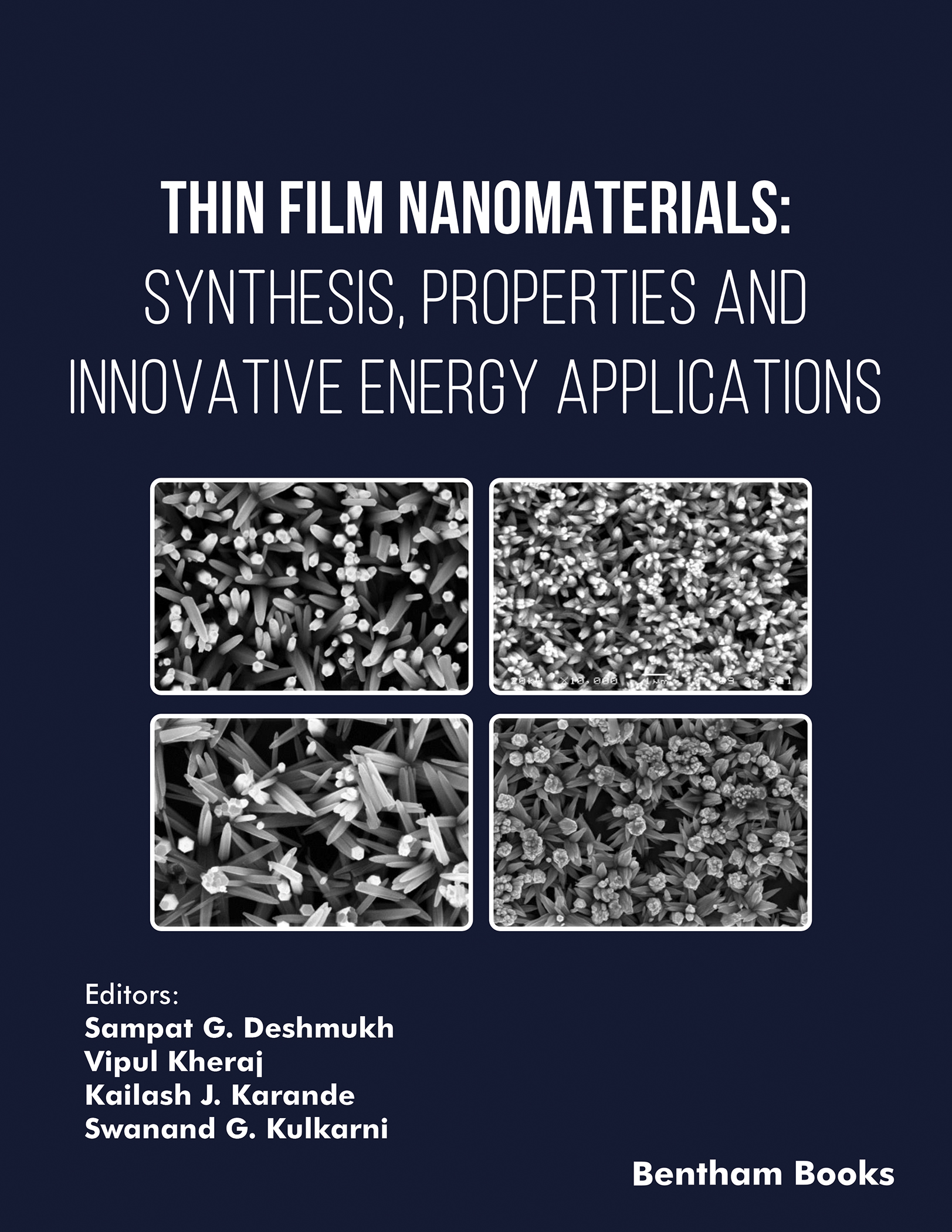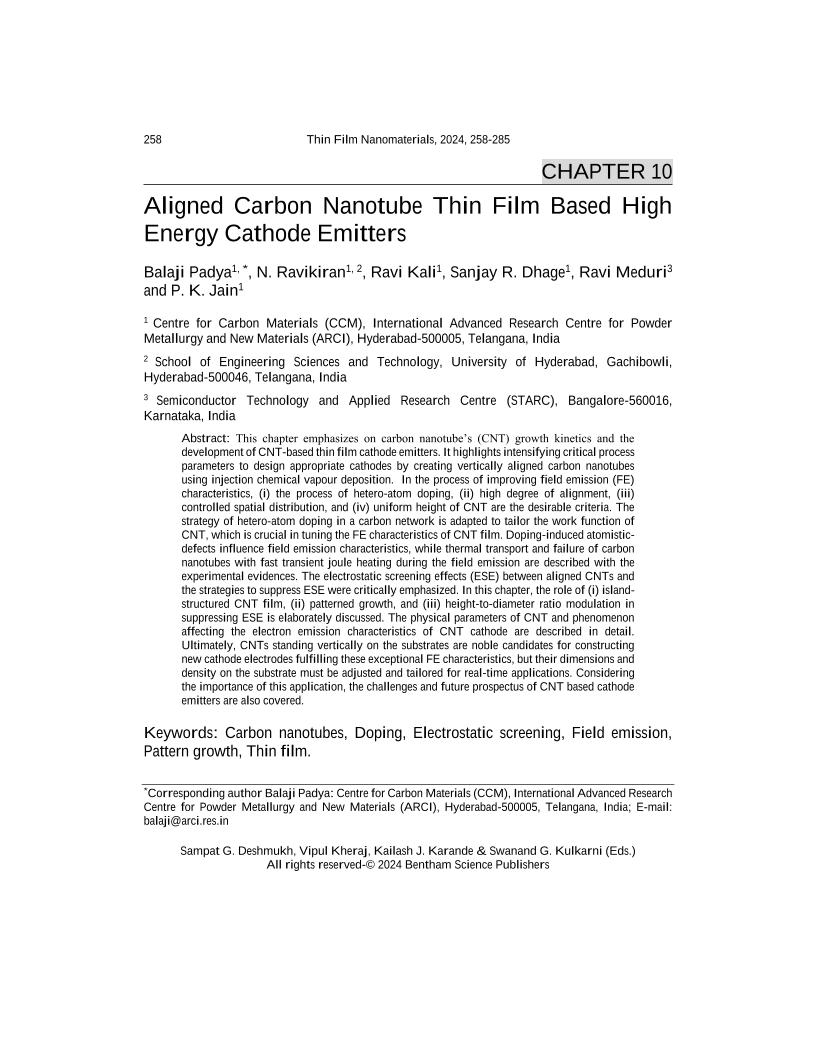- Home
- Books
- Thin Film Nanomaterials: Synthesis, Properties and Innovative Energy Applications
- Chapter
Aligned Carbon Nanotube Thin Film Based High Energy Cathode Emitters

- Authors: Balaji Padya1, N. Ravikiran2, Ravi Kali3, Sanjay R. Dhage4, Ravi Meduri5, P. K. Jain6
-
View Affiliations Hide Affiliations1 Centre for Carbon Materials (CCM), International Advanced Research Centre for Powder Metallurgy and New Materials (ARCI), Hyderabad 500005, Telangana, India 2 Centre for Carbon Materials (CCM), International Advanced Research Centre for Powder Metallurgy and New Materials (ARCI), Hyderabad-500005, Telangana, India 3 Centre for Carbon Materials (CCM), International Advanced Research Centre for Powder Metallurgy and New Materials (ARCI), Hyderabad-500005, Telangana, India 4 Centre for Carbon Materials (CCM), International Advanced Research Centre for Powder Metallurgy and New Materials (ARCI), Hyderabad-500005, Telangana, India 5 Semiconductor Technology and Applied Research Centre (STARC), Bangalore-560016, Karnataka, India 6 Centre for Carbon Materials (CCM), International Advanced Research Centre for Powder Metallurgy and New Materials (ARCI), Hyderabad-500005, Telangana, India
- Source: Thin Film Nanomaterials: Synthesis, Properties and Innovative Energy Applications , pp 258-285
- Publication Date: July 2024
- Language: English
This chapter emphasizes on carbon nanotube's (CNT) growth kinetics and the development of CNT-based thin film cathode emitters. It highlights intensifying critical process parameters to design appropriate cathodes by creating vertically aligned carbon nanotubes using injection chemical vapour deposition. In the process of improving field emission (FE) characteristics, (i) the process of hetero-atom doping, (ii) high degree of alignment, (iii) controlled spatial distribution, and (iv) uniform height of CNT are the desirable criteria. The strategy of hetero-atom doping in a carbon network is adapted to tailor the work function of CNT, which is crucial in tuning the FE characteristics of CNT film. Doping-induced atomisticdefects influence field emission characteristics, while thermal transport and failure of carbon nanotubes with fast transient joule heating during the field emission are described with the experimental evidences. The electrostatic screening effects (ESE) between aligned CNTs and the strategies to suppress ESE were critically emphasized. In this chapter, the role of (i) islandstructured CNT film, (ii) patterned growth, and (iii) height-to-diameter ratio modulation in suppressing ESE is elaborately discussed. The physical parameters of CNT and phenomenon affecting the electron emission characteristics of CNT cathode are described in detail. Ultimately, CNTs standing vertically on the substrates are noble candidates for constructing new cathode electrodes fulfilling these exceptional FE characteristics, but their dimensions and density on the substrate must be adjusted and tailored for real-time applications. Considering the importance of this application, the challenges and future prospectus of CNT based cathode emitters are also covered.
-
From This Site
/content/books/9789815256086.chapter-10dcterms_subject,pub_keyword-contentType:Journal105


